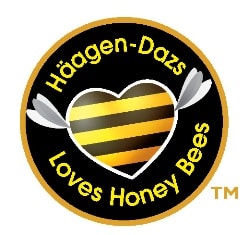 |
| bringbackthebees.ca |
By Marissa Erdelyi
Do you think you could go a day without your morning cup of coffee? I know I couldn’t, but I might have to. What about losing that fresh lemon in your water when you go out to eat? You could lose that too.
You know those pesky little black and yellow creatures that we swat at whenever they come near us, the honeybees? If we lose the little creatures, we could lose a lot more. Due to the high use of pesticides, this loss is more than a slight possibility.
Apples, mangos, strawberries, onions, avocadoes… that’s just the start of a long list of foods that would be lost along with the honeybees.
Colony collapse disorder (CCD) occurs when the majority of worker bees in a colony disappear and leave behind the queen, food and a few nurse bees to care for the young. When this happens, a colony is able to sustain itself for a while, but without enough workers bringing in food, the hive will die.
Colony collapse disorder has been happening for some time now. The honeybee population has been noticeably declining for decades, with a 57% decline in colonies between 1985 and 1997 in the United States, according to treehugger.com. In 2005, it was clear that the loss of bees was becoming troublesome when agricultural workers suffered great losses due to the decline in the pollinators (the bees). According to the National Resources Defense Center, in 2015, 42% of bee colonies collapsed.
So why is this happening? More importantly, why should you care? We’ll start off with the causes.
Colony collapse disorder has been found to occur for several reasons. According to the Environmental Protection Agency, some of the events that are known to cause CCD include pesticide poisoning through exposure to pesticides applied to crops or for in-hive insect or mite control, changes to the habitat where bees forage (gather nectar and nutrition), and inadequate forage or poor nutrition.
Bad News for Us
So now why should you care? Well, people need bees for many of the foods we enjoy eating. A good portion of the food we eat comes from crops that rely on animal pollinators. I mentioned just some of these crops before, but if you head over to FIX, there’s a list to put this in perspective.
As stated previously, people need bees, and now bees need people. There is a lot that can be done in order to save the population of honeybees in the U.S., and popular companies have noticed this. Companies such as Burt’s Bees and General Mills have been taking actions to help save the honeybees.
#BringBacktheBees Campaign
Burt’s Bees, an American company that provides Earth friendly personal care, health, beauty, and personal hygiene products, recently launched their #BringBacktheBees campaign on social media. The campaign prompts users to tweet b-less. For every b-less tweet, the company will plant 1,000 wildflowers in said tweets honor. Users can also purchase one of the company’s limited edition lip balms in order to help bring back the bees.
The company’s goal is to plant 1,000,000,000 flowers in total. The campaign is running until June 30th, and has already pledged to plant over 800,000,000 wildflowers. The flowers are set to be planted next to farms in order to offer the honeybees a “nutritious and much-needed feast.”
General Mills, the company behind Honey Nut Cheerios (a cereal that clearly depends and supports honeybees), has also taken initiative to help save the bees. In April, the brand announced that by the year 2020, farms that Honey Nut Cheerios gets oats from will house about 3,300 acres of pollinator habitat on 60,000 acres of farmland.
The company also released the first ever plantable, seed-embedded paper-insert ads. Readers could crumple these ads up and plant them in the ground. If you’re wondering what Haagen-Dazs has to do with the honeybees, the company depends on bee pollination for over 40% of its flavors.
Clearly, a lot is being done to save the honeybees, but more needs to be done to protect the colonies. To help save the honeybees, you can, of course, support these companies that have promised to help save the honeybees. There are also other steps that can be taken to help, such as planting your own nectar plants, reducing the amount of pesticides you use, and helping educate other people to this crisis.
For more information:
www.savehoneybees.org.
Marissa Erdelyi is a senior at Ramapo College of New Jersey. She will be graduating with a BA in Communication Arts: Writing.

No comments:
Post a Comment